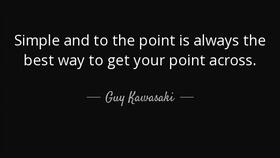Introduction:
The art of fishing is both a relaxing hobby and a challenging pursuit. Whether you're a seasoned angler or a beginner, there's always room to improve your technique and increase your chances of landing that big catch. In this article, we'll delve into some essential fishing tips and tricks that can help you "hook" more fish and enjoy a more successful day on the water.
Choose the Right Equipment:
The first step to successful fishing is ensuring you have the right gear. Here are some key pieces of equipment to consider:
- Rod and Reel: Select a rod and reel that match the type of fishing you plan to do. For freshwater fishing, a lightweight spinning rod and reel are a good starting point. For saltwater fishing, you'll likely need a heavier setup.
- Line: The type of line you use depends on the fish you're targeting and the conditions you're fishing in. Monofilament, fluorocarbon, and braided lines each have their advantages and disadvantages.
- Lures and Baits: Choose lures and baits that mimic the natural prey of the fish you're targeting. Live bait can also be effective, but it requires more preparation.
Understand the Fish You're Targeting:
To catch fish, you need to understand their habits and preferences. Here are some tips for targeting specific species:
- Bass: Bass are often found in areas with structure, such as rocks, logs, and weeds. Use lures that mimic insects or baitfish, and fish these areas with a variety of techniques, including casting, flipping, and pitching.
- Crappie: Crappie are bottom feeders and are often found in shallow water. Use small jigs or live bait, and fish around submerged structures like logs and brush piles.
- Trout: Trout are often found in cold, clear water. Use flies or small lures that imitate aquatic insects, and fish in areas with good water flow, such as streams and rivers.
Perfect Your Casting Technique:
A good casting technique is crucial for successful fishing. Here are some tips to help you improve your casting:
- Backcast: Hold the rod at a 45-degree angle, and pull the line back with a smooth, controlled motion. The line should form a loop as you pull it back.
- Forward Cast: After the backcast, release the line with a quick, flicking motion. The line should form a loop as it flies through the air.
- Tight Line: Keep the line tight between the rod tip and the lure to prevent snags and to feel the bite better.
Pay Attention to the Bait:
The way you present your bait or lure can make a big difference in whether you catch fish. Here are some tips:

- Motion: Add a natural motion to your bait or lure to make it more appealing to fish. This can be done by twitching, jerking, or winding the line.
- Depth: Adjust the depth of your bait or lure based on the water conditions and the species you're targeting. Use heavier lures in deeper water and lighter lures in shallow water.
- Timing: Wait for a few seconds after casting before you start retrieving your bait. This gives the fish time to investigate the offering.
Read the Water:
Understanding the water you're fishing can help you predict where the fish might be. Here are some things to look for:
- Structure: Look for areas with rocks, logs, or other structures that fish might use for cover.
- Vegetation: Vegetation can provide food and shelter for fish. Target areas with dense vegetation.
- Current: Fish often hold in areas with slow currents, such as behind rocks or in the eddies of a river.
Be Patient and Persistent:
Fishing is a waiting game, and patience is key. Here are some tips to help you stay focused and persistent:
- Change Your Approach: If you're not catching fish, try changing your lure, bait, or technique.
- Stay Quiet: Avoid making loud noises or sudden movements that could spook the fish.
- Keep Learning: The more you fish, the more you'll learn about the habits of different fish species and the best ways to catch them.
Conclusion:
Fishing is a skill that takes time to develop, but with the right techniques and a bit of patience, you can increase your chances of landing more fish. By choosing the right equipment, understanding the fish you're targeting, perfecting your casting technique, paying attention to the bait, reading the water, and staying patient, you'll be well on your way to becoming a more successful angler. So grab your rod, head to your favorite fishing spot, and put these tips into practice. Happy fishing!












